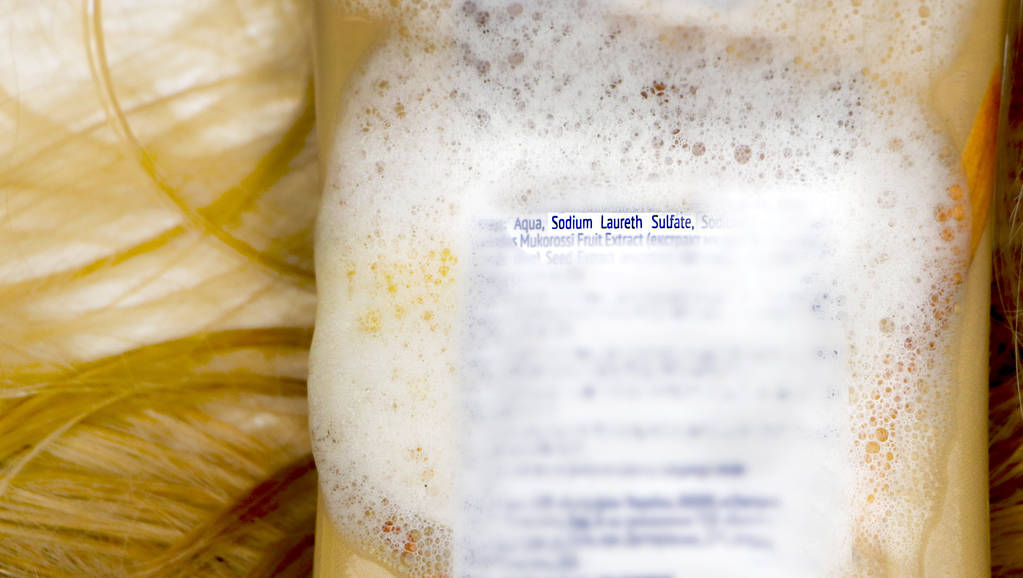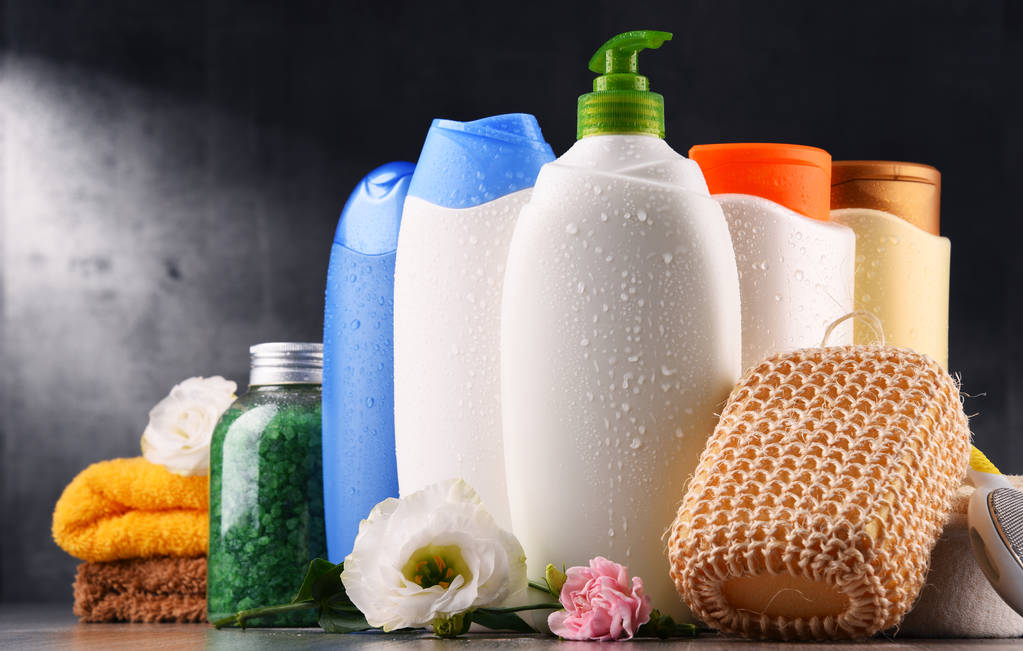Discover everything you need to know about laureth ingredients in this comprehensive guide.
The Ultimate Guide to Understanding Laureth Ingredients
Laureth ingredients? What are those mysterious substances lurking in our personal care products? Don’t worry, dear reader, for I am here to enlighten you! In this ultimate guide, we will delve into the world of laureth ingredients, specifically focusing on laureth-23. So buckle up and get ready for a scientific adventure like no other!

Understanding Laureth-23: What You Need to Know
Laureth-23, oh what a fascinating compound it is! But before we dig deeper, let’s start with the basics. Laureth-23 is an emulsifier, which essentially means it aids in creating a stable mixture of oil and water. Without emulsifiers like laureth-23, your favorite creams and lotions would resemble an unappetizing oil slick.
But what exactly makes laureth-23 such a remarkable emulsifier? To answer that question, we must delve into the science behind this versatile ingredient.
The Science Behind Laureth-23
Now, let’s take a peek behind the laboratory curtains and explore the science behind laureth-23. This emulsifier is derived from ethoxylated lauryl alcohol, which is obtained from coconut oil. Ethoxylation is a fancy process that involves adding ethylene oxide to the lauryl alcohol under controlled conditions.
During the ethoxylation process, the ethylene oxide molecules react with the lauryl alcohol, resulting in the creation of laureth-23. This unique compound has the ability to reduce the surface tension of liquids, making it easier for water and oil to mix.
Imagine a bottle of your favorite shampoo. Without laureth-23, the oil and water components in the shampoo would stubbornly resist blending together. You would end up with a clumpy mess that is neither effective nor pleasant to use.
However, thanks to laureth-23, this problem is easily solved. Its emulsifying properties allow the oil and water in the shampoo to mix seamlessly, creating a smooth and uniform product that can be easily applied to your hair.
But the magic of laureth-23 doesn’t stop there. This incredible emulsifier also plays a crucial role in stabilizing the different components of a product. Without it, the ingredients in your favorite cleanser or body wash would gradually separate over time, leaving you with an uneven and ineffective product.
By incorporating laureth-23 into these personal care products, manufacturers ensure that the ingredients stay well blended and do not separate. This not only enhances the overall effectiveness of the product but also improves its shelf life, allowing you to enjoy its benefits for a longer period of time.
So, the next time you’re lathering up with your favorite shower gel, take a moment to appreciate the magical emulsifying abilities of laureth-23. Without this remarkable compound, your daily beauty routine would be far less enjoyable and effective.
The Role of Laureth-23 in Personal Care Products
Now that we have a grasp on what laureth-23 is all about, let’s take a closer look at its various roles in personal care products. From cleansers to moisturizers, this emulsifier has found its way into a multitude of cosmetic goodies.
Common Uses of Laureth-23 in Cosmetics
One of the primary uses of laureth-23 is in facial cleansers and body washes. It helps to create that luxurious lather we all adore, while also ensuring that the cleansing agents are dispersed evenly. No one wants a lopsided distribution of soap bubbles, after all!
But its talents don’t end there. Laureth-23 also works wonders in moisturizing products by improving their texture and spreadability. Picture yourself applying a velvety smooth moisturizer that effortlessly glides across your skin. Well, you can thank laureth-23 for that sublime experience!
In addition to its role in cleansers and moisturizers, laureth-23 can be found in a variety of other personal care products. For example, it is often used in shampoos and conditioners to help distribute the active ingredients evenly throughout the hair. This ensures that every strand receives the nourishment it needs, leaving your hair looking and feeling healthy.
Laureth-23 is also commonly used in hair styling products, such as gels and creams. It helps to create the desired texture and hold, allowing you to achieve the hairstyle you desire. Whether you’re going for a sleek and polished look or a tousled and textured vibe, laureth-23 plays a crucial role in helping you achieve your desired hairdo.
Furthermore, this versatile emulsifier can be found in various skincare products, such as serums and masks. It helps to improve the absorption of active ingredients into the skin, ensuring that they penetrate deeply and effectively. This means that when you apply a serum or mask containing laureth-23, you can trust that your skin is receiving the maximum benefits.
Laureth-23’s usefulness extends beyond its role in personal care products. It is also widely used in the pharmaceutical industry as an excipient, which is a substance added to a medication to improve its stability, solubility, or bioavailability. Its emulsifying properties make it an excellent choice for formulating creams, ointments, and lotions.
Additionally, laureth-23 is known for its mildness and low irritation potential, making it suitable for use in products designed for sensitive skin. It helps to enhance the overall sensory experience of personal care products without compromising on safety.
In summary, laureth-23 is a versatile emulsifier that plays a crucial role in various personal care products. From cleansers to moisturizers, shampoos to serums, this ingredient helps to improve texture, spreadability, and overall performance. Its wide range of applications and mild nature make it a valuable addition to the world of cosmetics and pharmaceuticals.
Debunking the Safety Concerns of Laureth-23
Now, let’s address the elephant in the room: Is laureth-23 safe? Rumors have circulated about this emulsifier causing harm, but fear not, for we shall separate fact from fiction!
Separating Fact from Fiction: Is Laureth-23 Harmful?
Here’s the truth, dear reader. Laureth-23 is considered to be safe for use in cosmetics by regulatory authorities. It has undergone rigorous testing to ensure it meets the necessary safety standards. The Cosmetic Ingredient Review (CIR), an expert panel of scientists and physicians, has evaluated the safety of laureth-23 and concluded that it is safe for use in cosmetics when used as directed.
Laureth-23 is a type of surfactant, which means it helps to mix oil and water-based ingredients in cosmetic formulations. It is commonly used in various personal care products, such as shampoos, conditioners, body washes, and facial cleansers, to create a smooth and creamy texture. This ingredient plays a crucial role in enhancing the overall performance and stability of these products.
However, as with any ingredient, individual sensitivities can vary. So if you experience any irritation or adverse reaction, it’s always best to discontinue use and consult a dermatologist. It’s important to note that allergic reactions to laureth-23 are extremely rare, but everyone’s skin is unique, and what works for one person may not work for another.
It’s important to remember that the concentration of laureth-23 in personal care products is limited and well within the recommended levels. Regulatory authorities, such as the Food and Drug Administration (FDA) and the European Union’s Scientific Committee on Consumer Safety (SCCS), have established guidelines and restrictions on the use of laureth-23 to ensure consumer safety.
Like all ingredients, it’s a matter of moderation, my friend! The key is to use products as directed and avoid excessive exposure. When used in appropriate amounts, laureth-23 poses no significant risk to your health or skin. So, lather up, enjoy your favorite skincare products, and embrace the wonders of laureth-23.
Exploring Alternatives to Laureth-23 in Skincare Products

While laureth-23 has proven its mettle as an emulsifier extraordinaire, some individuals may prefer to explore alternative options. So, let’s dive into the vast sea of emulsifiers and see what other wonders await us!
When it comes to skincare, there is no shortage of options to choose from. Emulsifiers play a crucial role in creating stable and well-blended skincare products. They help to combine oil and water-based ingredients, ensuring that the product is smooth and evenly distributed. While laureth-23 is a popular choice among formulators, it’s always good to have alternatives at hand.
One alternative to laureth-23 is ceteareth-20. This emulsifier is known for its excellent solubilizing properties, making it ideal for creating clear and transparent formulations. It has a light and non-greasy feel on the skin, making it suitable for a wide range of skincare products.
Polysorbate 60 is another noteworthy alternative. This emulsifier is derived from natural sources and is known for its ability to create stable emulsions. It has a high HLB (hydrophilic-lipophilic balance) value, which means it has a stronger affinity for water. This makes it a great choice for products that require a higher water content.
Sorbitan stearate is yet another alternative that deserves attention. This emulsifier is derived from sorbitol and stearic acid and is widely used in skincare formulations. It has excellent emulsifying and stabilizing properties, making it suitable for a variety of products, including creams, lotions, and serums.
Remember, dear reader, variety is the spice of life! So why not experiment and discover which emulsifier tickles your fancy? You never know, you might stumble upon your skincare soulmate! Whether you choose ceteareth-20, polysorbate 60, sorbitan stearate, or any other alternative, rest assured that there are plenty of options available to meet your skincare needs.
In Conclusion
And there you have it, the ultimate guide to understanding laureth ingredients, with a special focus on laureth-23. We’ve explored its science, its roles in personal care products, debunked safety concerns, and even delved into alternative options. Now armed with this newfound knowledge, you can confidently navigate the cosmetic aisle!
So, go forth and conquer, my fellow skincare enthusiasts! Embrace the wonderful world of laureth ingredients and celebrate the beauty and science behind the products you love.






[…] we embark on this retinol-infused journey, it’s essential to have a basic understanding of what this magical ingredient is all about. So, what exactly is […]
[…] Phenoxyethanol, pronounced “fuh-nox-ee-ETH-uh-nawl,” is a versatile chemical compound widely used in cosmetics and skincare products. But before we delve into its wonders, let’s understand the chemistry behind this charming ingredient. […]